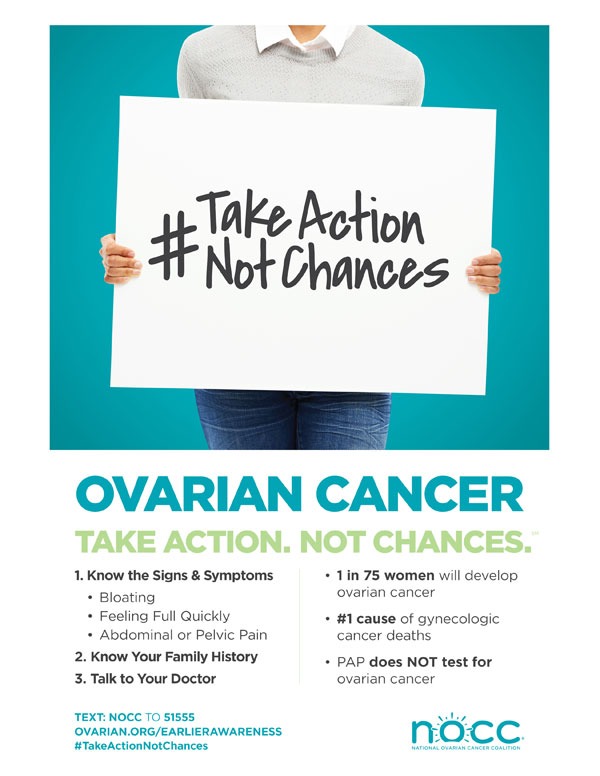 Types of Gynecological Cancer
Types of Gynecological CancerGynecological cancers are those that develop in a woman’s reproductive tract. Cervical cancer is only one type of gynecological cancer. Other types include:
- Ovarian cancer
- Uterine cancer
- Vaginal cancer
- Vulvar cancer
There are different risk factors for each of these cancers, including, in some cases, heredity. But many women who develop cancer without being considered high risk. It’s important for women to be aware of the types of gynecological cancer, symptoms and potential warning signs to watch out for, and screening and prevention strategies.
Understanding Symptoms of Gynecological Cancer
Each type of gynecological cancer has different symptoms, some of which may be difficult to recognize. While women should be familiar the symptoms associated with gynecological cancer, it is just as important for women to pay attention to their own bodies and take note when something is “off” or not normal. The Centers for Disease Control and Prevention (CDC) has developed a symptoms diary that women can use to keep track of any unusual symptoms they may experience so they can share this in detail with a healthcare provider. The PSA from CDC also explains some warning signs to be aware of.
Cervical Cancer
The vast majority of cases of cervical cancer are linked to human papillomavirus (HPV) infection. The majority of women with an HPV infection will not develop cervical cancer, but regular screening is essential. In most cases cervical cancer can be prevented through early detection and treatment of abnormal cell changes that occur in the cervix years before cervical cancer develops. These changes are typically detected through a Pap test or an HPV test. HPV vaccines can also prevent cervical cancer.
In its early stages, cervical cancer typically doesn’t have any symptoms, which is why regular screening is so important. At later stages, symptoms may include abnormal vaginal discharge or bleeding or pain during sex. While these can also be signs of other health issues, if a woman experiences these symptoms, she should report them to her healthcare provider.
Uterine Cancer
According to the CDC, uterine cancer (cancer which develops in the uterus) is the most commonly diagnosed gynecological cancer in the U.S. and the fourth most common cancer in U.S. women overall. While any woman can develop uterine cancer, it is most commonly diagnosed in women who have gone through menopause. Risk factors for uterine cancer include age (being age 50 or older), obesity, taking estrogen alone as hormone replacement, and having a family history of uterine, ovarian or colon cancer.
Routine testing is not recommended for uterine cancer, so it is important for women to be aware of symptoms—such as abnormal vaginal discharge or bleeding and/or pain and pressure in the pelvic area—and talk to a healthcare provider if they experience these.
Ovarian Cancer

While ovarian cancer accounts for about 3% of cancers among women, it causes more deaths than any other gynecological cancer, according to the American cancer Society. While the survival rates for ovarian cancer are excellent when the disease is diagnosed early, only about 20% of ovarian cancers are found at this early stage. One reason for this is that there is no recommended routine screening for ovarian cancer on women without symptoms. And the symptoms of ovarian cancer—including abnormal abdominal bloating, abdominal pain or pressure, and feeling full quickly when eating—can also be easily be ignored or mistaken for other problems.
For women who experience these symptoms, or who at at higher risk (including women who have had breast cancer or have a family history of ovarian, breast or colorectal cancer), a healthcare provider may recommending further screening. Testing may include rectovaginal pelvic exam, a transvaginal ultrasound,or a CA-125 blood test.
Vaginal and Vulvar Cancer
Vaginal and vulvar cancers are rare—an estimated 1,000 women are diagnosed with vaginal cancer and 3,500 women with vulvar cancer each year. Like cervical cancer, vaginal and vulvar cancers are also associated with HPV infection, with up to 90% of vaginal cancers and pre-cancers and more than 50% of vulvar cancers linked to infection with the high-risk HPV types. HPV vaccines, which prevent some of the high-risk types of HPV, can also help prevent vaginal and vulvar cancers.

